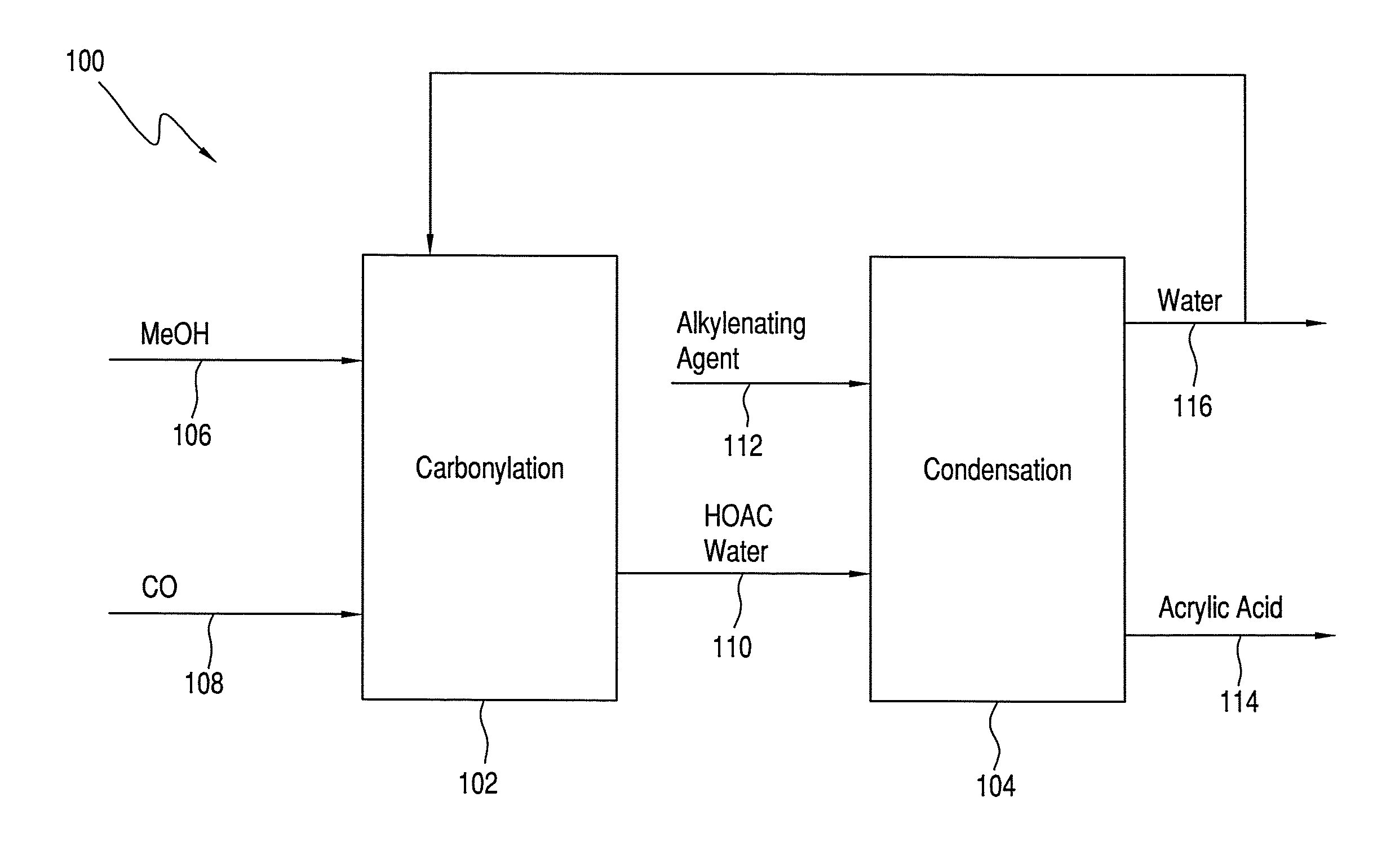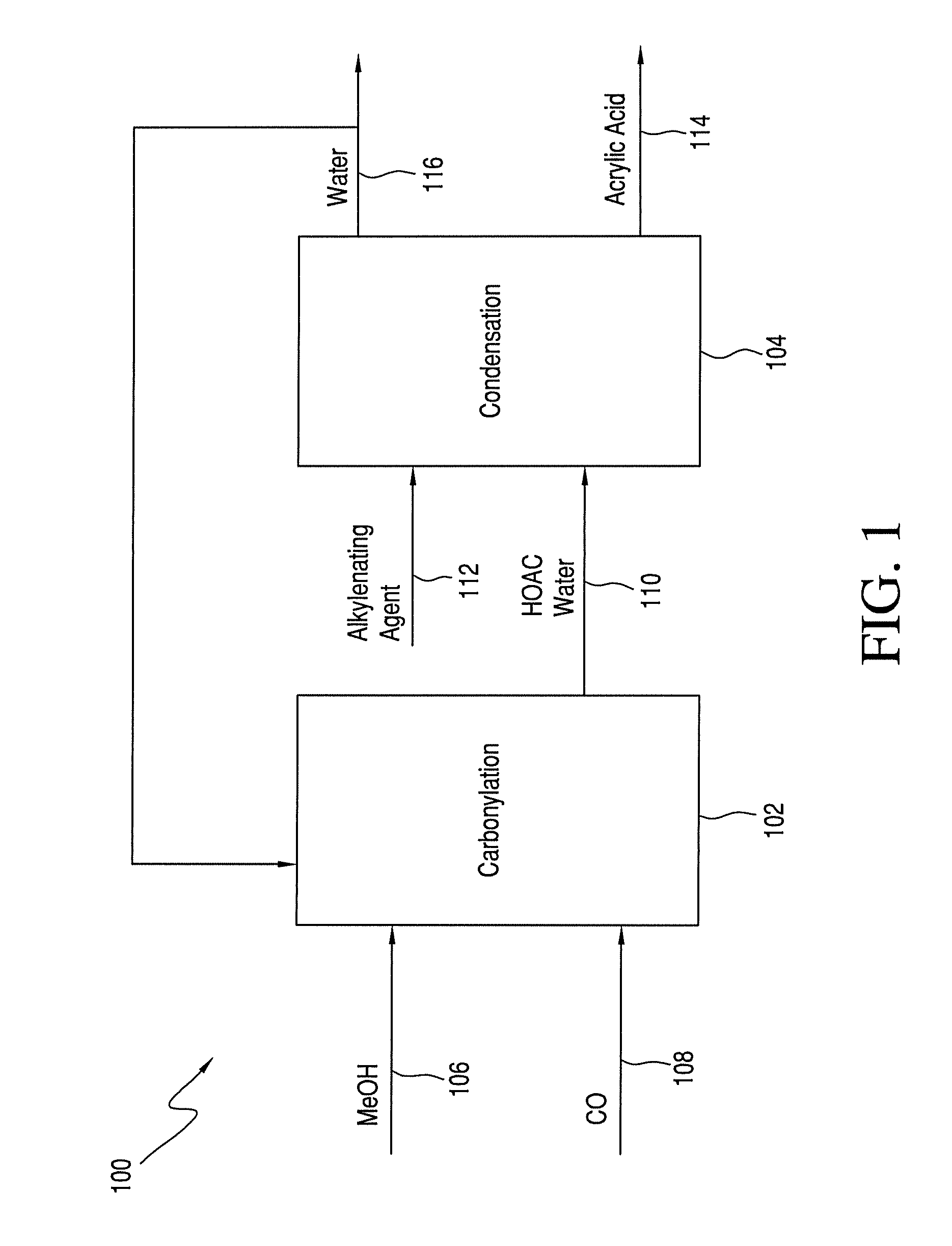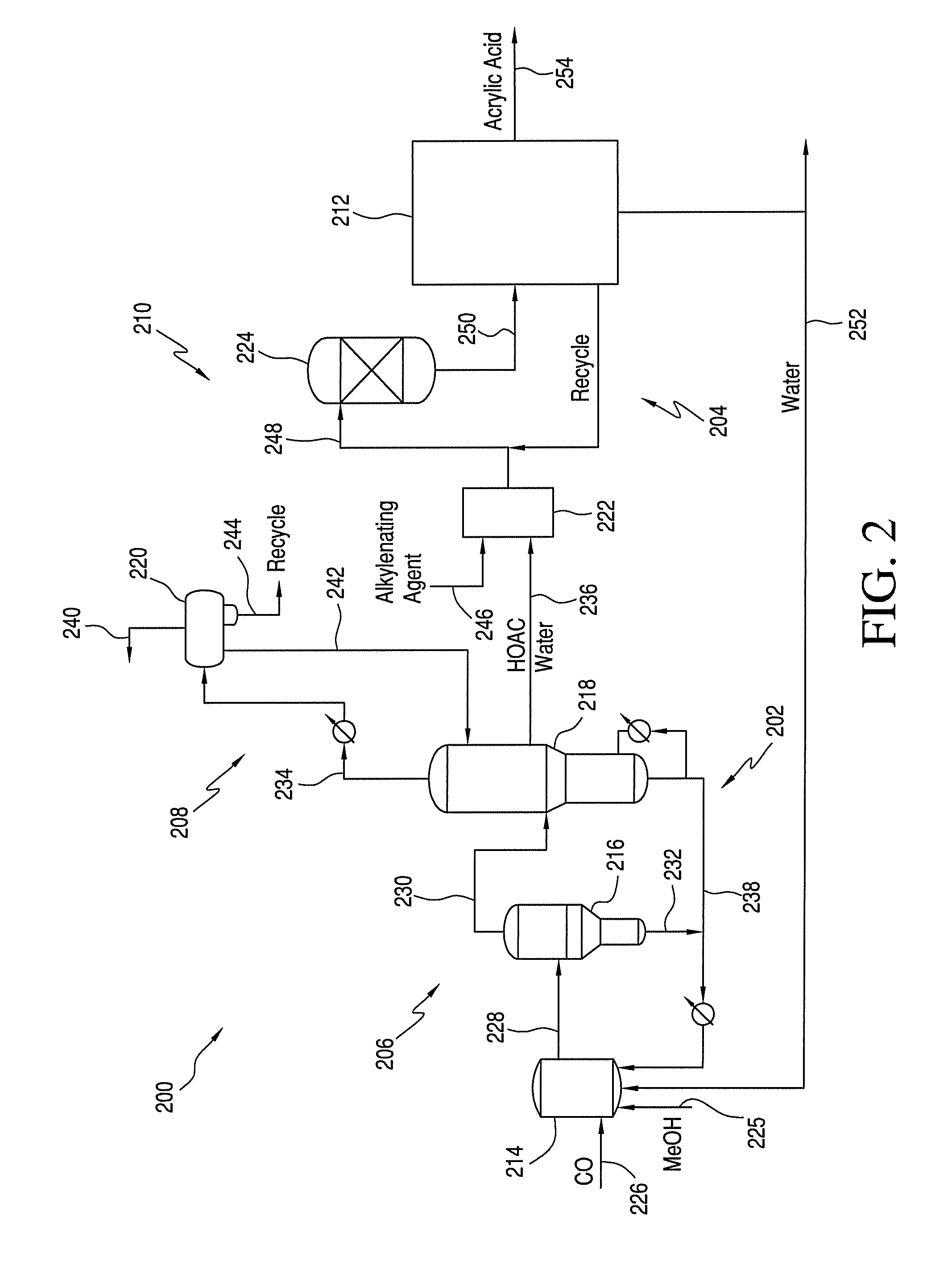Process for Making Acrylic Acid by Integrating Acetic Acid Feed Stream from Carbonylation Process
- Summary
- Abstract
- Description
- Claims
- Application Information
AI Technical Summary
Benefits of technology
Problems solved by technology
Method used
Image
Examples
example
Example 1
[0177]Multiple simulations of processes under different catalyst performances in accordance with FIG. 3 were completed using ASPEN™ software. In each stream, the flow rate and composition vary with the catalyst performance and design specifications. In general, an illustrative composition for the various process streams is demonstrated in Table 10 based upon the simulation results. For simplicity, the composition of a component in Table 10 is displayed as 0% if its level is so low that it becomes hardly detectable. For simplicity, the composition of a component in Table 10 is displayed as 100% if other components are so low and hardly detectable.
TABLE 10SIMULATED COMPOSITIONAL DATA FOR PROCESS STREAMSCondensation Reaction ZoneFormaldehyde FeedComp.Acetic Acid Feed Stream 308Stream 306Acrylic Acid00Acetic Acid97.890Water2.1135Formaldehyde065Other00Condensation Reaction ZoneCrude AcrylateComp.Combined Feed Stream 312Product Stream 350Acrylic Acid026.82Acetic Acid65.7339.44Wat...
example 2
[0179]Multiple simulations of processes under different catalyst performances in accordance with FIG. 4 were completed using ASPEN™ software. In each stream, the flow rate and composition vary with the catalyst performance and design specifications. In general, an illustrative compositions for process streams are demonstrated in Table 11, based upon the simulation results. For simplicity, the composition of a component in Table 11 is displayed as 0% if its level is so low that becomes hardly detectable. For simplicity, the composition of a component in Table 11 is displayed as 100% if other components are so low and hardly detectable.
TABLE 11SIMULATED COMPOSITIONAL DATA FOR PROCESS STREAMSCondensation Reaction ZoneFormaldehydeFeedComp.Acetic Acid Feed Stream 436Stream 446Acrylic Acid00Acetic Acid98.000Water2.0048.40Formaldehyde051.60Methanol00Non-Condensable Gas00Condensation Reaction ZoneCrude AcrylateProduct StreamComp.Combined Feed Stream 448450Acrylic Acid010.88Acetic Acid26.701...
PUM
 Login to View More
Login to View More Abstract
Description
Claims
Application Information
 Login to View More
Login to View More - R&D Engineer
- R&D Manager
- IP Professional
- Industry Leading Data Capabilities
- Powerful AI technology
- Patent DNA Extraction
Browse by: Latest US Patents, China's latest patents, Technical Efficacy Thesaurus, Application Domain, Technology Topic, Popular Technical Reports.
© 2024 PatSnap. All rights reserved.Legal|Privacy policy|Modern Slavery Act Transparency Statement|Sitemap|About US| Contact US: help@patsnap.com










